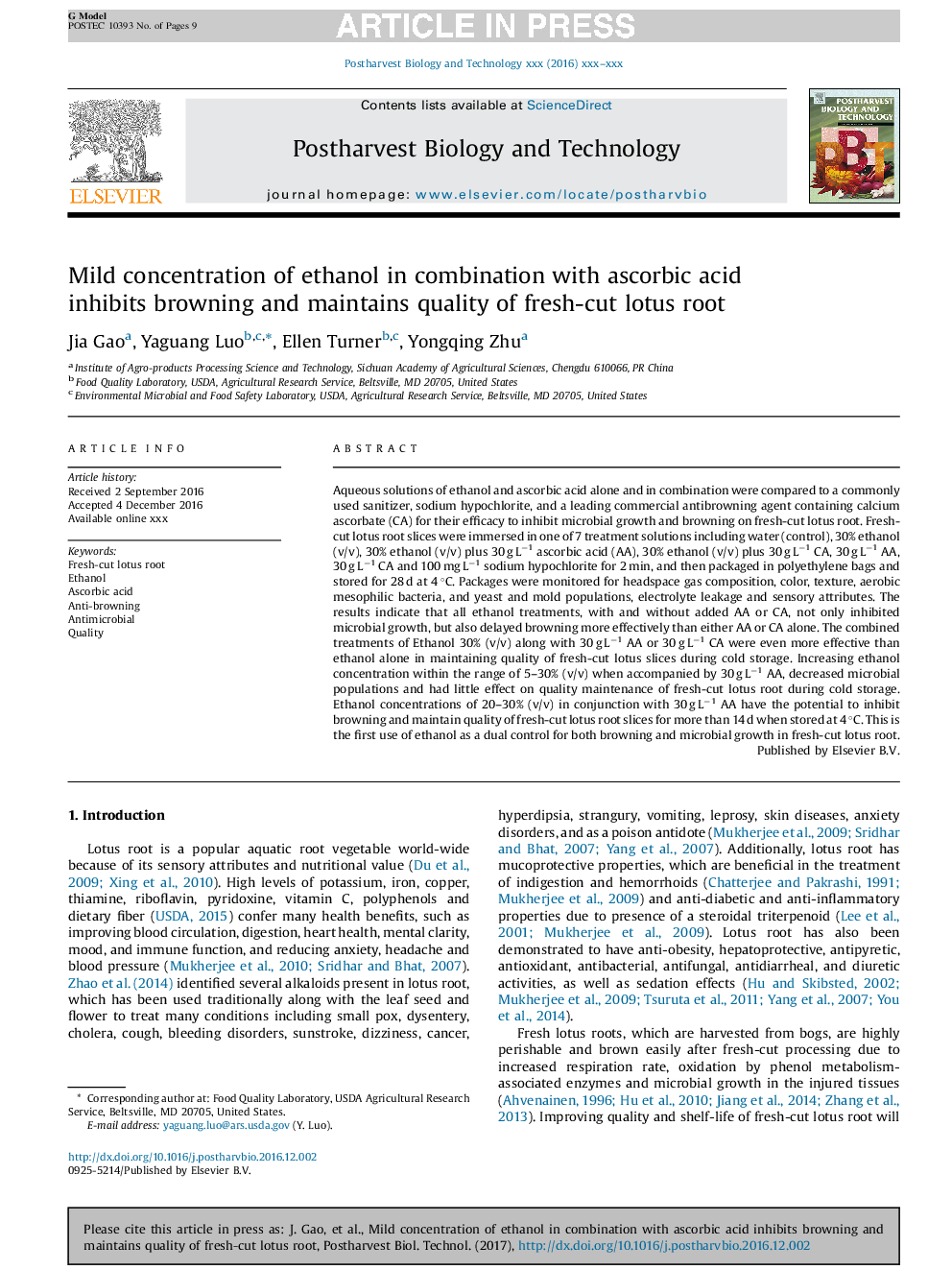| Article ID | Journal | Published Year | Pages | File Type |
|---|---|---|---|---|
| 5762782 | Postharvest Biology and Technology | 2017 | 9 Pages |
Abstract
Aqueous solutions of ethanol and ascorbic acid alone and in combination were compared to a commonly used sanitizer, sodium hypochlorite, and a leading commercial antibrowning agent containing calcium ascorbate (CA) for their efficacy to inhibit microbial growth and browning on fresh-cut lotus root. Fresh-cut lotus root slices were immersed in one of 7 treatment solutions including water (control), 30% ethanol (v/v), 30% ethanol (v/v) plus 30 g Lâ1 ascorbic acid (AA), 30% ethanol (v/v) plus 30 g Lâ1 CA, 30 g Lâ1 AA, 30 g Lâ1 CA and 100 mg Lâ1 sodium hypochlorite for 2 min, and then packaged in polyethylene bags and stored for 28 d at 4 °C. Packages were monitored for headspace gas composition, color, texture, aerobic mesophilic bacteria, and yeast and mold populations, electrolyte leakage and sensory attributes. The results indicate that all ethanol treatments, with and without added AA or CA, not only inhibited microbial growth, but also delayed browning more effectively than either AA or CA alone. The combined treatments of Ethanol 30% (v/v) along with 30 g Lâ1 AA or 30 g Lâ1 CA were even more effective than ethanol alone in maintaining quality of fresh-cut lotus slices during cold storage. Increasing ethanol concentration within the range of 5-30% (v/v) when accompanied by 30 g Lâ1 AA, decreased microbial populations and had little effect on quality maintenance of fresh-cut lotus root during cold storage. Ethanol concentrations of 20-30% (v/v) in conjunction with 30 g Lâ1 AA have the potential to inhibit browning and maintain quality of fresh-cut lotus root slices for more than 14 d when stored at 4 °C. This is the first use of ethanol as a dual control for both browning and microbial growth in fresh-cut lotus root.
Related Topics
Life Sciences
Agricultural and Biological Sciences
Agronomy and Crop Science
Authors
Jia Gao, Yaguang Luo, Ellen Turner, Yongqing Zhu,
